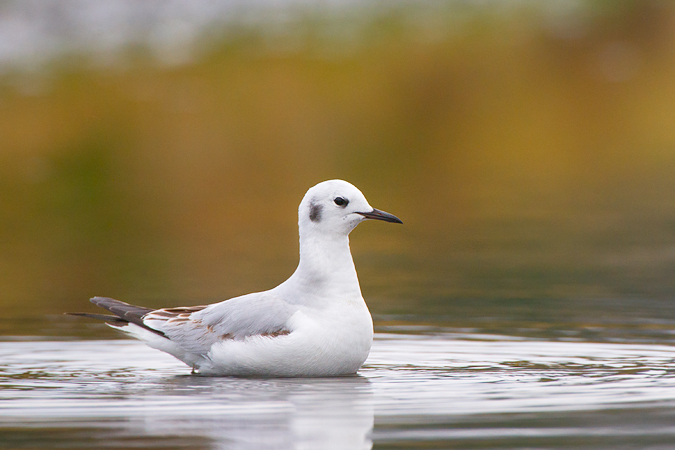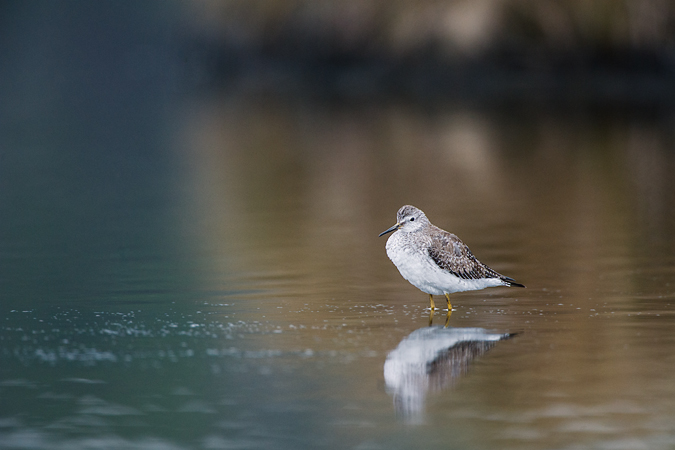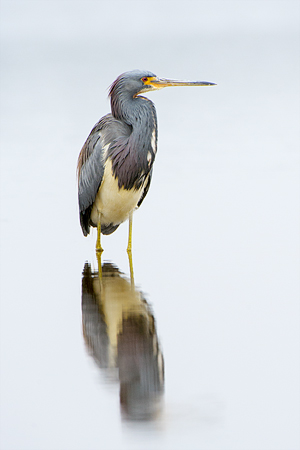Today I had the chance to go to a new location, Bear Island Wildlife Management Area. A new place is always exciting – even if there are no bears here. I wonder where the name came from. Perhaps there were bears at one point. Anyway, to make the experience better I was going along with a group of photographers from the Carolina Nature Photographers Association. A great group of people who are really excited about wildlife photography (and other sorts of nature photography). If you’re in the Carolinas, you should look into joining the region closest to you. I started the morning with a few photos of the Tundra Swans before they took off at dawn and then switched to a group of Bonaparte’s Gulls that were feeding nearby.
It was a really dark and dreary day. But I love these kind of days – they make it easy to bring out the detail in your subjects and the colors are very richly saturated. There was also a cooperative Lesser Yellowlegs near the shoreline. Lately I am starting to develop a preference for images with the animal relatively small in the frame. It’s a bit harder to balance the background and composition in the frame, but when done right the results are very rewarding. They don’t look that great on the web, but when viewed in large prints or on a large monitor, these images really take on a new life. Here I liked the way the reflection of the shoreline cut through the scene.
The diversity at Bear Island WMA was fantastic. It’s towards the end of the winter now, but not only are all the common birds in the area here, but many other rarer species that you have a tough time finding in South Carolina. The Tundra Swans were a great example of the rarer species. This Tricolored Heron is one of the common species.
American Avocets are a specialty of Bear Island. There are a few places in the state where you can find avocets in the winter, but Bear Island is the closest to a sure thing. There were a lot of avocets here too. At least 30, perhaps more. There were some great colors in the water with the pine forest across the pond and some dead grass in the near waters.
American Avocets are up there as one of the most elegant birds out there with their sublime curves. Even when they don’t have that orange-rust color of the breeding plumage, they are still striking birds. Bear Island is a good place to see a variety of their behaviors with large numbers of the birds and relatively open areas. It’s also a great place to capture some flight shots – definitely a reason to make it back out here on a day with more light. Bear Island was definitely a fun trip and hopefully the rest of the CNPA group got some great photos.





